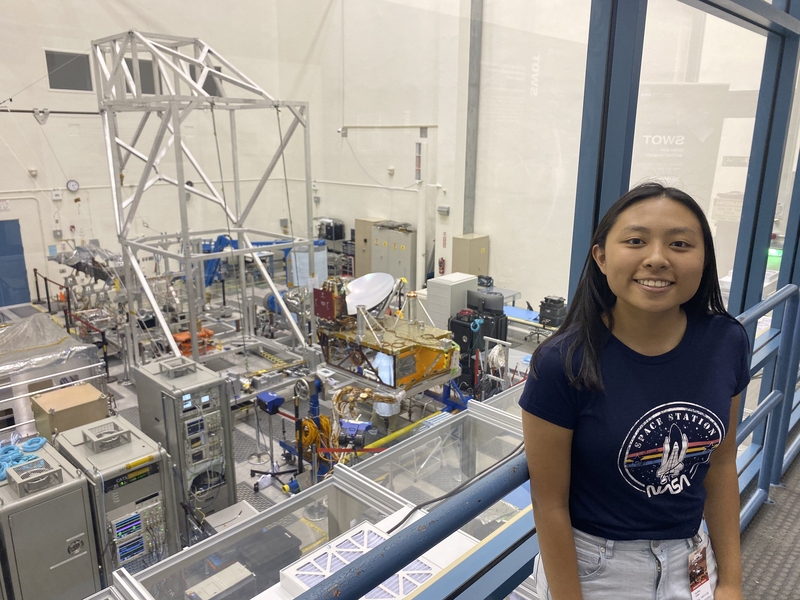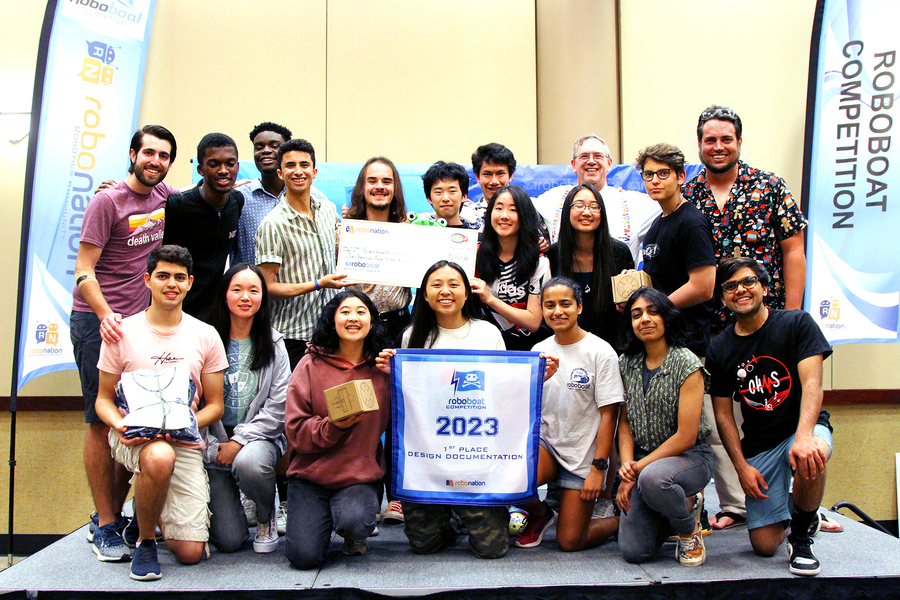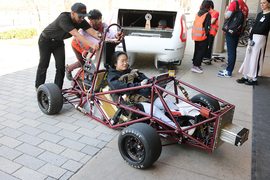Audrey Chen ’24 lives by the philosophy that “a lot of opportunities only present themselves if you ask for them.” This approach has served her well, from becoming a NASA intern at 15 to running MIT’s autonomous boat team Arcturus to entering a leadership position at 3D printing technology company Formlabs right out of undergrad.
Growing up in Los Angeles, Chen showed a strong aptitude and passion for engineering at a young age and skipped several grades in math. In her first year of high school, she saw a posting about the JPL Space Academy at NASA’s Jet Propulsion Lab. Though the program was for juniors and seniors, she inquired if they would make an exception for her and they agreed. By her junior year she was helping run the program as deputy.
But Chen didn’t stop there: She had dreams of interning at NASA. She asked her mentor and became a drone air traffic control researcher at NASA at 15. “I was not old enough to drive,” Chen says. “High school would end, the bell would ring, and I would put on my backpack and I would run down the street to JPL. Can you imagine you're the security guard at the gate of the Jet Propulsion Laboratory and a kid shows up for work?”
Chen worked on the Orbiting Arid Subsurfaces and Ice Sheet Sounder (OASIS) project, whose goal is to find and examine freshwater aquifers and ice sheets. “It was very early in the mission, so I was doing system and objective definition,” Chen says.
Next stop: MIT
After graduating high school, Chen ventured across the country to explore her eclectic interests at MIT. When she wasn’t fulfilling the requirements for her mechanical engineering degree, she could be found leather crafting, glass blowing, or table welding in one of MIT’s makerspaces, documenting MIT student life with her camera (garnering the acclimation “The Eyes of MIT” by MIT Admissions), working as a researcher sampling deep-sea sediment, or notably, running the award-winning autonomous boat team Arcturus.
“Arcturus has been the highlight of my MIT career,” Chen says. She founded the team at MIT Sea Grant in 2022 along with a group of equally impassioned students who elected Chen as captain.
“I didn't have any background in marine autonomy, so we pushed very hard to institute trainings and have lots of workshops so that they would feel comfortable coming in and contributing as soon as possible,” she recalls. Seeking additional funding and support, the team found a home at the MIT Edgerton Center.
Launching Arcturus
“Whenever I think about how Arcturus started and how it somehow still continues, I think it’s a miracle,” Chen says. “Our very first year, there were five of us at the Roboboat competition, and if any individual one of us had not decided to join the team, we either would not have a boat, we would not have electronics, we would not have code to run the boat, or we wouldn’t have funding to run the team.”
Chen’s first year as captain was a tremendous amount of work because the team was so small. In addition to managing the team and assuring they met their goals on time, Chen also acted as the team’s business lead, treasurer, media lead, and photographer. “I was juggling a lot of things. Since then, those roles have further split amongst more people within the team,” she says.
Recruiting isn’t easy for an autonomous boat team, as many students don’t get marine robotics experience in high school. To keep their recruitment pool wide, Chen didn’t expect students to have background in autonomy or in marine systems. “Creating an environment that’s welcoming and friendly and supportive of people’s learning is crucial, because otherwise you won’t have a team. We’ve really pushed hard to recruit from a large body of people. We make sure to emphasize that we’re open to all majors, all years. As an industry, marine robotics, like most engineering, is very male-dominated. We work hard to recruit people of all genders and ethnicities.”
With Chen’s skillful recruiting, Arcturus increased from five to 74 members in 2024. Arcturus flourished under Chen’s leadership, winning First Place Design Overall at the Roboboat competition in 2023.
The challenges with autonomous boats
Chen was drawn to autonomous boats because the field is so full of potential. “You leave a robot on land and you turn it off, it doesn't move by itself, versus you put it in a body of water and you don't do anything, then it still moves because of the currents. It needs to be constantly taking in that input and trying to localize where it is,” Chen says.
Chen sees a lot of potential in the marine biotics industry to gather crucial data about our environment. “Autonomy in the marine space is not as well researched as land autonomy is. There’s immense potential for marine autonomy to benefit the world. You think about mapping ocean topology or looking for endangered species or habitat protection or surveying bleached coral reefs. As a vehicle, you have more flexibility to move around versus a buoy. That gives you the ability to take water and sediment samples across a wider spread of area. And by making it autonomous, you eliminate high labor costs, so the price per sample for a researcher would go down. These are different ways in which autonomy has potential to benefit the research sphere, but also, more broadly, the world.”
Chen graduated early this past February and passed Arcturus on to captains and rising juniors Ami Shi and Karen Guo. “They’re rock stars. The team is in good hands,” Chen says.
Becoming a project manager at Formlabs
Chen graduated a semester early and accepted a project manager position at Formlabs. She brings many lessons from MIT to her work. “The biggest thing that I’ve learned is that I don’t need to know everything. Part of being successful is knowing what you don’t know. So I’m always aware that in every Arcturus meeting, and probably every technical meeting that I’ll be in at Formlabs, that I will not be the smartest person in the room. And that’s fine. I don’t need to be the smartest person ever because that’s not my job. My job is to bring these projects together and know enough about all the systems to integrate them.”
Chen is thrilled to stay near MIT after graduation, allowing her the opportunity to visit her friends and continue mentoring Arcturus. Upon announcing her new job, she remarked, “To my friends at MIT, I’ll be just down the street, so you won’t be able to get rid of me that easily!”

















